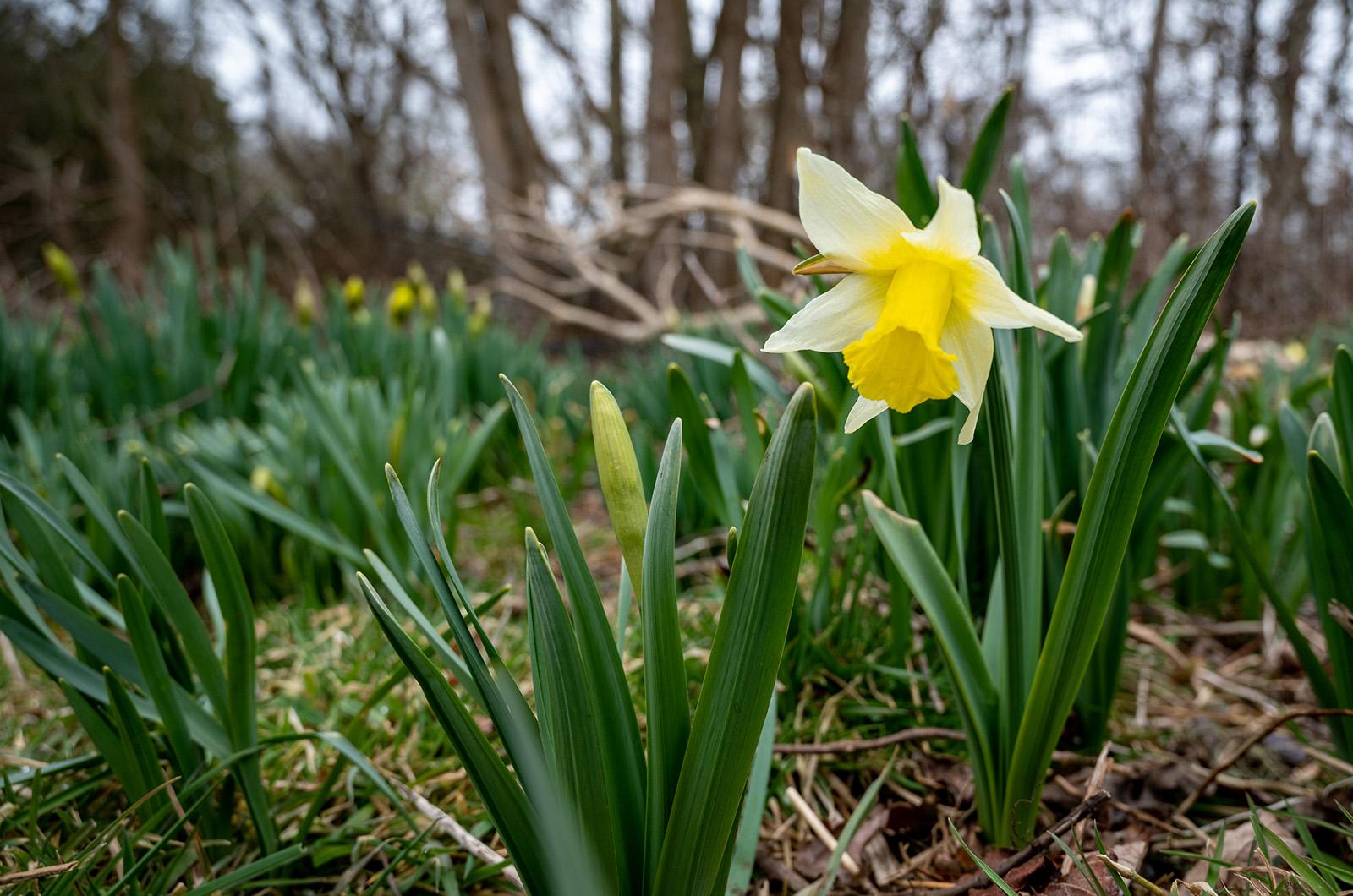Spring, of course, arrived last week. In West Tisbury, daffodils heralded it by blooming in Ann Burt’s yard. She reported seeing ducks and swans and Canada geese swimming up the Tiasquam River, too. Presumably, they were searching out nesting places for the future.
At Howes House, and in many Island yards, snowdrops are brightening the grass, and daffodils — if not quite in bloom — are almost there.
Pussy willows have been sighted. The witch hazel has buds and rhododendrons have uncurled their leaves and are putting forth buds. On Tuesday, it was time to shed wool hats and gloves.
In hopes that I might see a swan exploring the Mill Pond for a nesting site, I took a walk along the pond past the Allen M. Look memorial bench that, sadly, has lost the plaque that recorded that late selectman’s name. How nice it would be if West Tisbury replaced that plaque.
Decades ago, when my husband, Tom Cocroft, and I first came to West Tisbury and lived in the Congregational Church parsonage above the pond, a favorite walk of his with our calico cat was out our back door down to the Mill Pond’s waters. There, they would look for nesting swans and swimming ducks and Canada geese, the occasional otter and box turtles. Sometimes they saw snapping turtles which they made sure to avoid.
In those days, the Mill Pond sparkled so that the late Harold Tinker, Choate School master who had retired to New Lane, dubbed the pond “the centerpiece of West Tisbury.” He applauded the West Tisbury Campbell who owned the mill (now the Garden Club) and the pond, both of which he gave to the town to care for and enjoy. Hal Tinker called West Tisbury the “loveliest village of the plain” a nod to the words of Irish-English poet Oliver Goldsmith.
On Tuesday, with spring fever, I went to see if swans might be seeking a nesting site on the pond, as they had when Joan Jenkinson was West Tisbury’s animal control officer. She always saw that Mill Pond swans were fed.
There were no swans when I walked by, but there were black ducks swimming and young fishermen casting for state-supplied brook trout. Sadly, however, the pond is filling up with mud.
Island naturalist Gus Ben David sighs as he sees today’s Mill Pond. “West Tisbury without the Mill Pond? I can’t imagine it. It’s the highlight of the town. It should never be allowed to become a swamp.”
Robert Woodruff, former executive director of the Mill Pond Study Committee, echoes these comments. He expresses hope, along with the Friends of the Mill Pond, that the town’s Mill Brook Watershed Committee will soon report its recommendations for that West Tisbury centerpiece along which I went walking on Tuesday to welcome spring.
.




Comments
Comment policy »